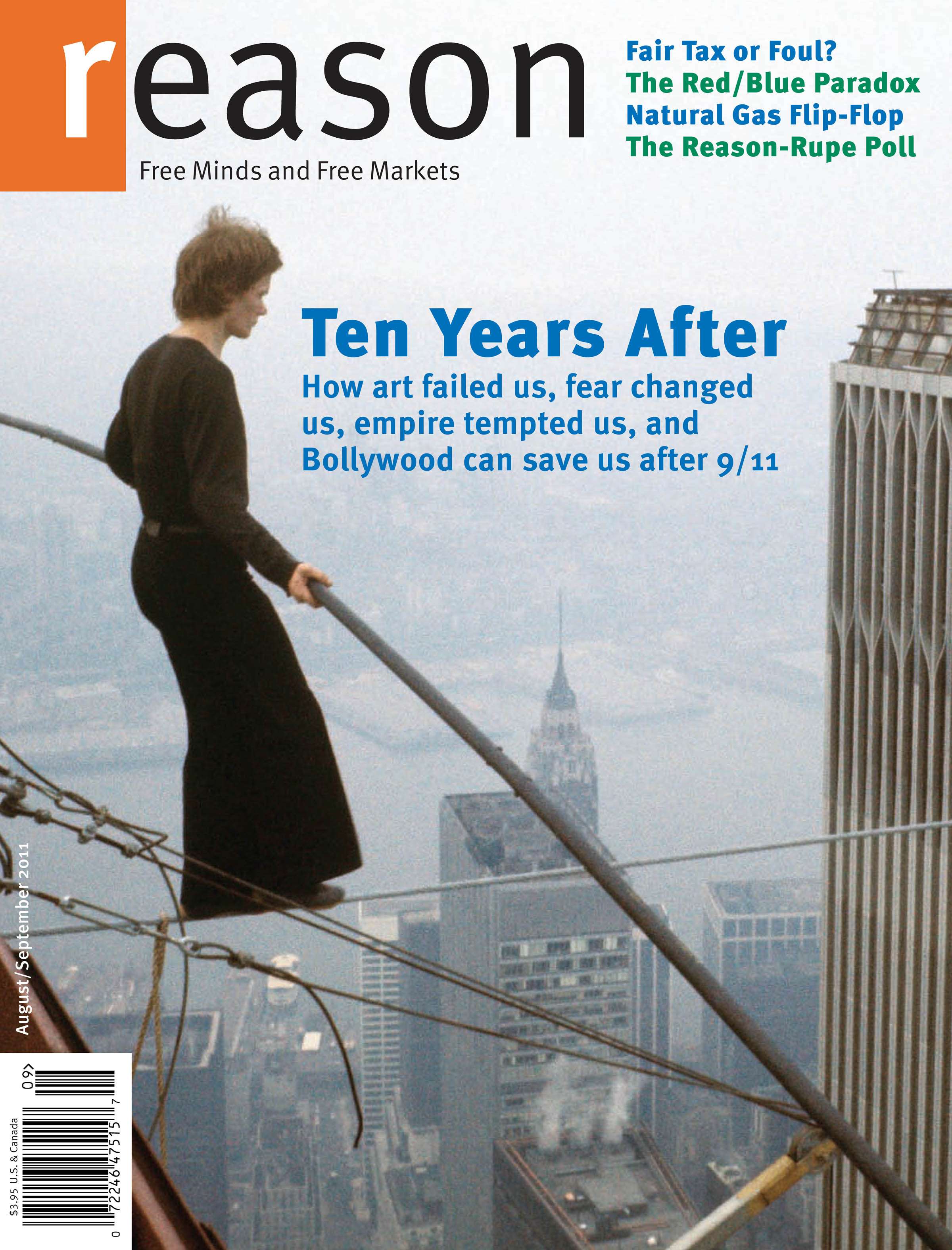How Art Failed Us After 9/11
Springsteen and DeLillo failed us, but Neil Young, Elton John, and the tightrope walker Philippe Petit brilliantly honored the dead.

From a Reason story published on the 10th anniversary of the 9/11 attacks:
At least two major artists took their best swings at 9/11-themed works. In the summer of 2002, Bruce Springsteen released The Rising, a concept album that garnered critical praise and fast early sales, debuting at No. 1 on the Billboard 200. The album's tracks, some of which were written before 9/11, stand in sharp contrast to Springsteen's legendary, indelible work in the 1970s and '80s. While his reputation-making songs were filled with memorable characters out of a rock 'n' roll version of Damon Runyon—Crazy Janey, Jimmy the Saint, Rosalita, Mary Queen of Arkansas—The Rising is filled with abstract songs about generic loss….
For [Don DeLillo in his novel Falling Man], a more important threat than terrorism per se is the rise of global capitalism, which he claimed in late 2001 was "driving unmindfully toward a landscape of consumer-robots and social instability, with the chance of self-determination probably diminishing for most people in most countries." Never mind data from organizations such as Freedom House that reflects growth in representative government and expanding rights over the last 40 or so years (or that the most repressive countries are those which most restrict economic choice of resident "consumer-robots"). In DeLillo, terrorism's effects are always secondary to what caused it. His first post-9/11 novel wasCosmopolis, which was released in 2003 but set in 2000 as the tech bubble was bursting, laying waste to a decade DeLillo says had "one theme, and the name of the theme was money." It is this theme and the terrorism he believes it inspires that help explain the removed quality of his 9/11 book. In a 2003 interview with the Los Angeles Times, DeLillo averred that terrorism "is outside the absorption machinery.…In Prague recently, a young man set himself on fire. Thirty-five years ago, another young man did the same thing, protesting the incursion of Soviet tanks into Prague. This kid did it to protest the excesses of capitalism. In 35 years, this is the terrible symmetry that's taken place. I don't think that's absorbable."
There is something deeply grotesque in equating a response to Soviet tanks rolling into an already repressive country with capital rolling into a free, democratically ruled Czech Republic.
Among the most moving pieces of art commemorating the 9/11 attacks is, I think, the documentary Man on Wire, which retells aerialist Philippe Petit's 1974 bizarre tightrope walk between the twin towers:
The brilliance of the movie is that it allows us to visit the World Trade Center and linger there for as long as we wish, while never pretending to forget the gaping hole that will always be there no matter what physically replaces the destroyed buildings. The film is no exercise in feel-good nostalgia; it doesn't allow us to escape the utter destruction of 9/11 so as much as it compels us to face a moment in time that can never be revised. It is what it is, to quote a phrase that became ubiquitous after 9/11. Throughout Man on Wire, all the people involved in Petit's plot—an immensely complicated and lucky conspiracy of joie de vivre that almost perfectly mirrors the dark-hearted death plot of 9/11—break down in tears as they recall the precise moment when the tightrope walker stepped out into the void between the North and South Towers. Decades later, they are rendered mute by memory, overwhelmed by the recollection of a moment when the unthinkable became reality, if only briefly.
It is in those unstoppable, unabsorbable tears that art honors the dead of 9/11, because it allows us to remember a day we all wish to forget. Here art offers not a refuge from reality but an entry back into it.


Show Comments (36)